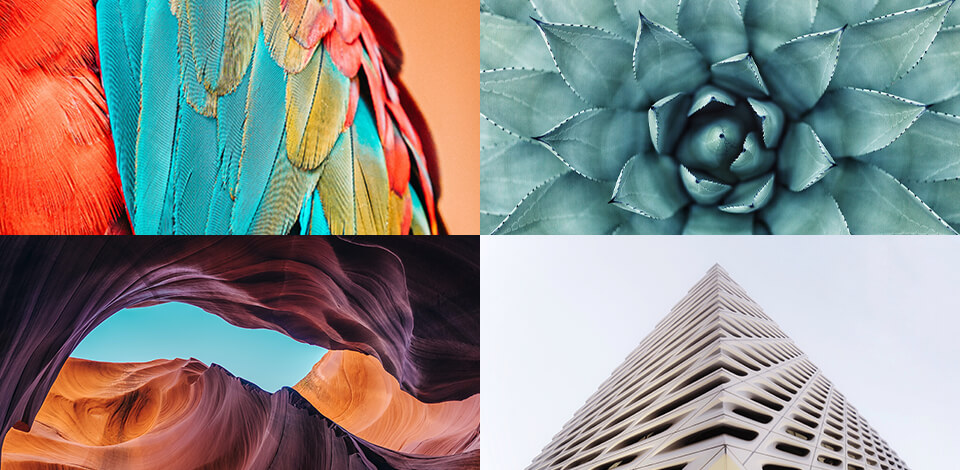
Form in photography is a great way to add depth and interest to any image by combining shape and light. Such pictures look more realistic and the viewers believe that they can feel and touch the objects in the photo themselves.
Photography composition consists of several elements such as form, color, line, shape, space and texture. All of them are necessary to implement various creative photography ideas. The form, like other design components, attracts the viewer's attention and makes the photographer's idea more understandable to people.
To make a shape in the image become three-dimensional and take on form, you need to add some light to the composition. Take advantage of shadows and highlights to make the object eye-catching.
Playing with light, you can create a variety of shadows and give different meanings to your objects. Make the shadows longer, deeper or harder to convey your message to the viewers. Alternatively, you can use softer shadows, with a subtle form.
Without form in photography, objects lose their three-dimensional appearance and look flat as if drawn on paper.
These are the two key design components of a shot. They affect the overall look of the picture and how people understand and perceive it. So that you can create breathtaking photos with deep meaning, you need to have a good understanding of the features of these two compositional elements.
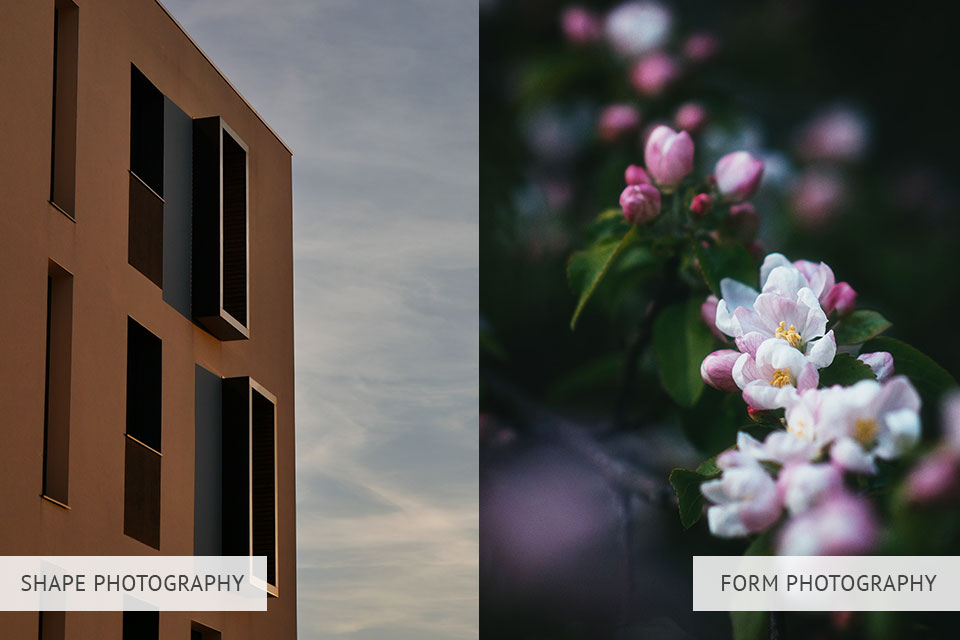
When we talk about shape in photography, we mean a 2D object shot from behind the lens. For example, the sun is a circle, a building is rectangular, and so on. Remember that all two-dimensional shapes do not show depth.
Form in photography stands for the 3D look of shapes. In other words, when photographing a head-on building, you will see a rectangle in the picture. You will get different angles and edges as well as shadows and lights if you experiment with perspective. This will help add depth to your subject.
Let's look at a simple example. Imagine an ordinary orange ball. If it is illuminated by the frontal light in the photo, then the shadow is completely absent. How does the ball look without a shadow? That's right, you will see just an orange circle, like in children's educational books.
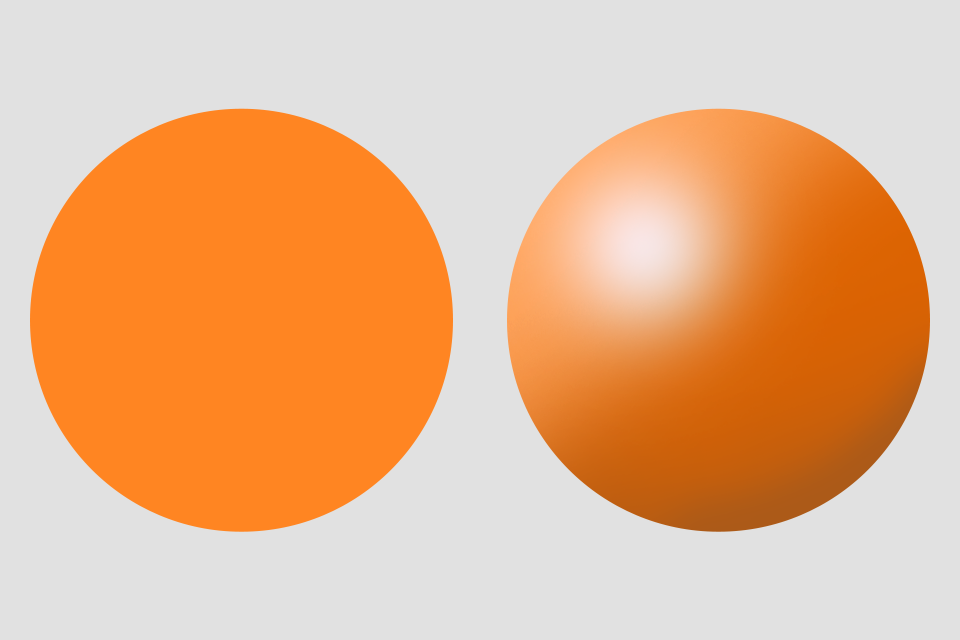
Of course, this “circle” may actually have an unrealistic volume, but you will never see this without a shadow. On the other hand, if you move the light source slightly up and to the side, you will get a completely different result. A shadow will appear and you will see a three-dimensional object.
By adding some dark areas, we give our flat circle volume and it becomes a ball. A shade darker than the subject itself is the shadow of that subject. It gives volume to the elements depicted in a flat photograph or drawing.
To make it easier to detect the transition from light to dark, you should turn the color image into black and white. Your eyes will focus on the fall off of light on a subject and not on the colors. This trick is a great option for minimalistic black and white photos where bringing out the form is key.
I recommend honing your skills in identifying forms in photography in practice. Here are some helpful tips:

Choosing the most advantageous angle as well as knowing all the specifics of contrast in photography are important things for those who are engaged in creative shadow photography.
By trying different perspectives you can contribute to the appearance of the form. When you take a front-on photo of the subject, it loses its volume and looks flat in the image. To create forms that stimulate shapes, you should shoot from different angles.

You can also use other objects in the frame to create forms. Space them in different places from background to foreground or take advantage of various planes. As a result, your subject will become three-dimensional in the photo.
Depth is another factor that makes the form in photography more noticeable. For example, when photographing trees, you can take a few out of focus in the background and focus on one in the foreground. This approach works well with other objects as well. You just need to focus on the one in the foreground and let the others in the background go out of focus. This method of enhancing form and depth in photography is called selective focus.
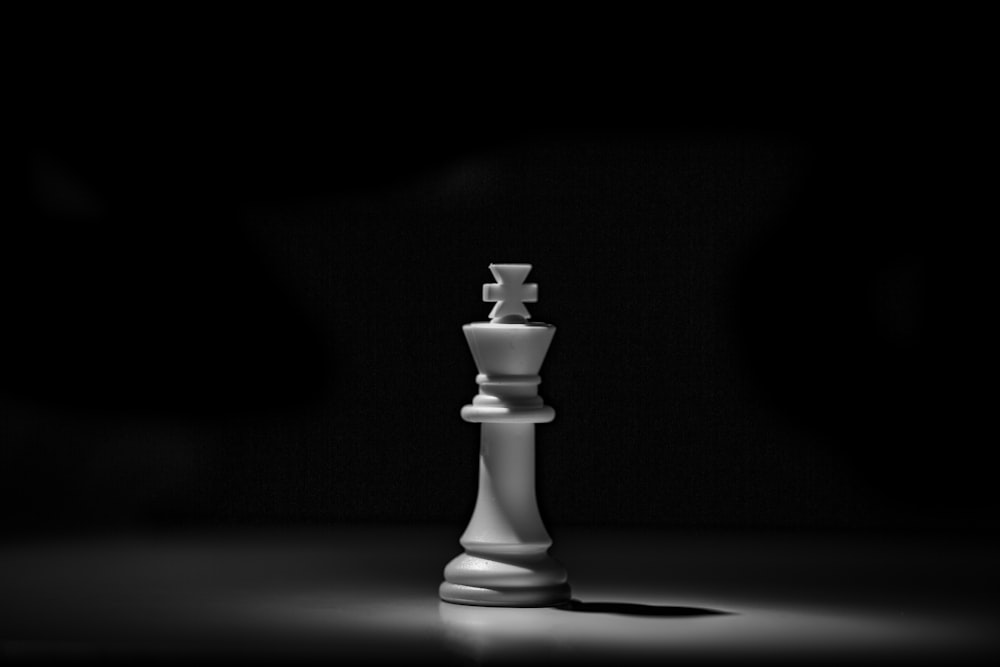
Light is just as important as angle when it comes to this genre. Your object will appear two-dimensional if the light falls in front of it. Placing the light source behind will also not bring you the desired result, since the object will turn into a silhouette.
To get shadows and forms, you need to light the subject from the side. To create a wider range of tones between the shadows and the highlights, you should diffuse the light.
The choice of lenses is one of the key points for shape and form photography. Think about the form you are going to photograph and use the appropriate lens.

With wide-angle lenses, you get a wider field of view than your sensor. This means that the horizontal scope will be larger. Handle this lens correctly or your shot will appear compressed around the edges. Distorted straight lines are the main indicators that you have made a mistake.

As an alternative, you can resort to telephoto lenses. They provide a longer focus distance with a narrower field of view. In the picture, all shapes and forms look closer because such lenses reduce the distance.

Fluid borders make forms more visible. You can achieve this effect through intentional camera movement. You need to set a long exposure (e.g. 1/125th or less) and move the camera. In the end, you will have unique abstract shapes that will grab the attention of the viewers.

Also, you can add more focus to the shape or form using the balance technique. It consists in achieving an equal visual weight of all elements of the composition through their juxtaposition.
Shooters build visual balance in several ways to create the form in photography. Firstly, there should be as much free space in the picture as the object occupies. Secondly, the rule of thirds method can also be useful. Photograph the shape so that it takes up one-third of the picture. Finally, you can achieve the form's perfect symmetry and improve the shape by placing the object in the center of the picture.

Black and white images give you more room to play with forms than color ones. The b&w scheme features wider tonal sensitivity and you can use it to emphasize the depth.
If you are using solid colors then the 'flatness' of the shape will be more obvious. Besides, blocks of bold color can be used to enhance the immediacy of 2D elements in the pictures.

If you're shooting outdoors, then try to benefit from natural light during the golden hour. Since it is low and soft, the shadows around your subject will look less harsh.
Remember that low-angled sunlight is preferred. So, you want the sun to be on the side of the object.
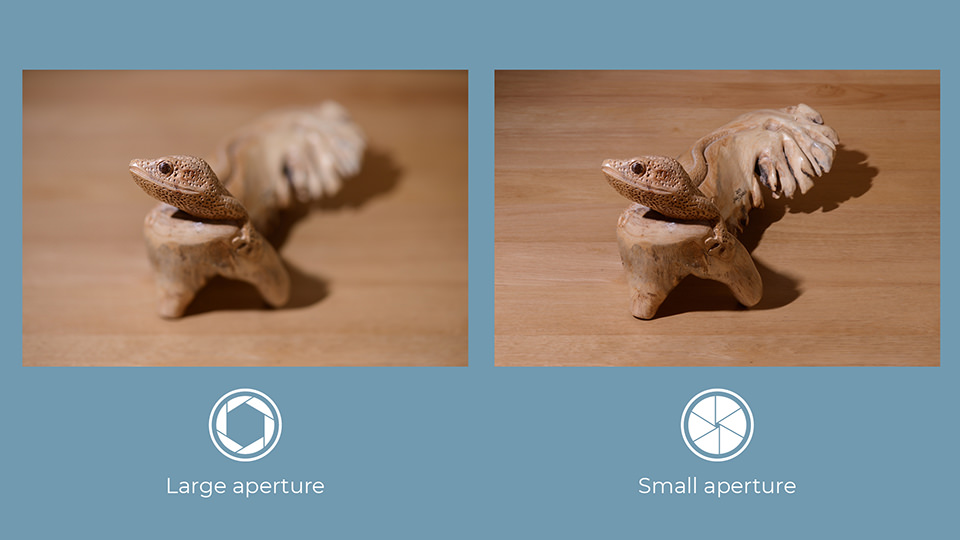
You can see blurring when your subject is separated from its background. This is another trick to add depth to the picture. It allows you to highlight the shape of the object better. It doesn't matter what kind of object or subject it is.
A large aperture (starting at f/1.8) is preferred for creating depth. To get a blurrier background, you should choose the smallest possible f-number.
There are many examples of form in photography to draw inspiration from. Many famous photographers and amateur shooters have worked in this area experimenting with light, darkness, perspective, exposure, and aspects to create amazing shots. They used the power of shadows to add depth or completely transform an image.
If you want to find some cool ideas to try, read on. I will share useful information about the best photographers in this genre. Browse through their work and you're sure to draw some inspiration here.
Location: Spain
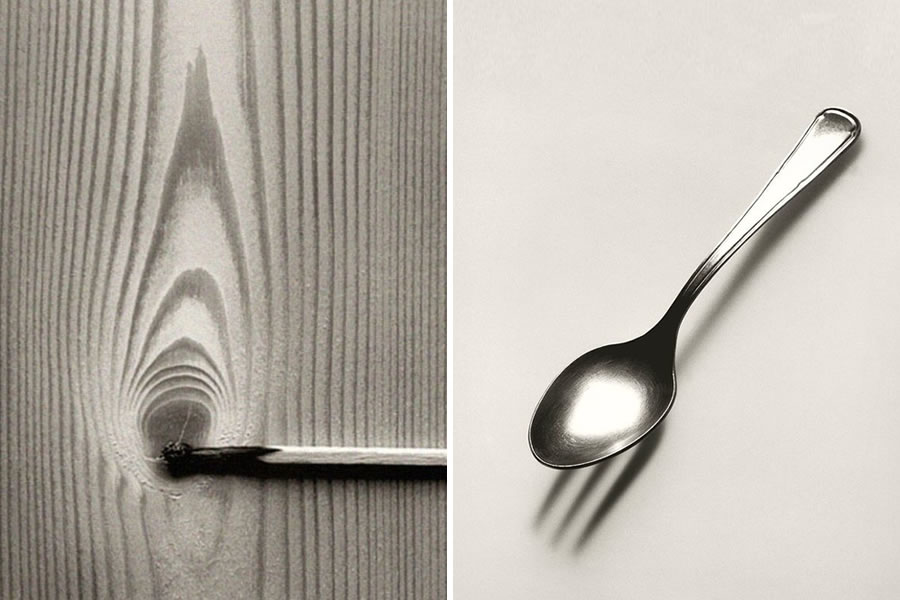
Spanish photographer Chema Madoz was born in Madrid as Jose María Rodríguez Madoz. He is known for his black and white surreal photos. He positions himself more as an arranger than a photographer and focuses on creating visual poetry. Chema Madoz builds incredible compositions by presenting ordinary objects in the most unique and fresh way.

He conveys his ideas through stunningly powerful images based on exceptional combinations of shapes and elements. His works are not just examples of abstraction and surrealism. Madoz makes every effort to ensure that his photos are a kind of visual metaphors. He usually uses medium format film to capture subjects. The photographer takes advantage of all the possibilities given by the objects and creates impressive compositions.
Location: USA
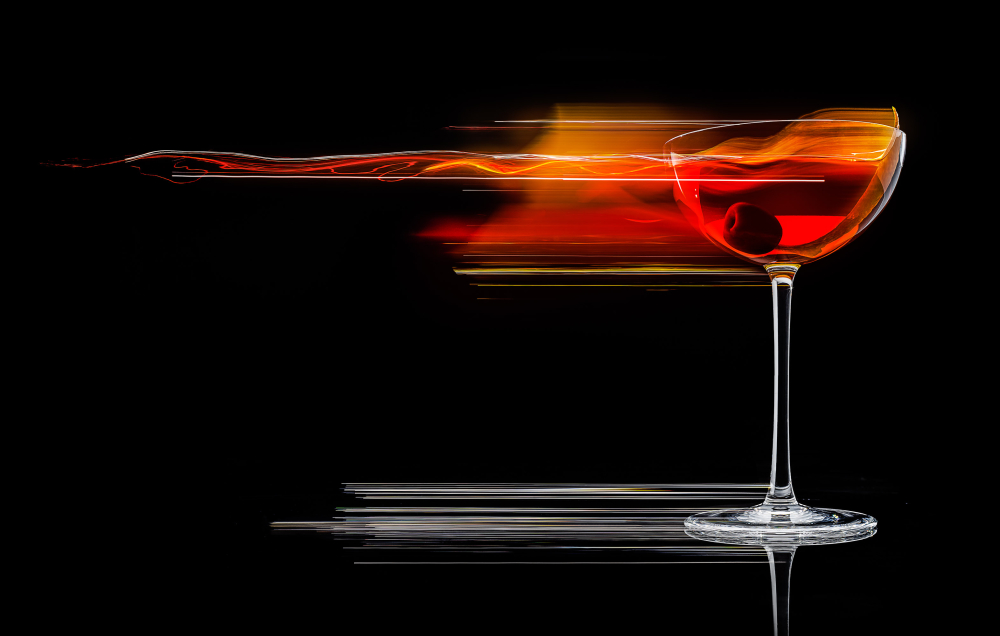
Timothy has received many awards for his incredible still-life images. This American photographer is amazing with lighting and creates extremely accurate shots. He experiments with a wide range of colors and light to capture iconic photos filled with symbolic images.

Timothy Hogan has over twenty years of experience in the photography industry. He has photographed for many famous brands such as Calvin Klein, Chanel, Tommy Hilfiger, as well as other companies related to fashion, technology, design, and more. His pictures are known for their unique composition and volume. Besides, they are influenced by his passion for surfing and exploration.
Location: Ukraine

Oleksandr Rupeta specializes in documentary photography. This Ukrainian photographer shoots in many countries of the world. He works on news photo reports in Europe, Africa, the Middle East, and Asia covering cultural, political, and social life in these regions.

Oleksandr prefers to take monochrome shots or convert color images to black and white during post-processing. You can see his examples of form in photography published in famous magazines and newspapers like The Times, The New York Times, The Guardian, The Economist, National Geographic Traveler, and others.
Location: United Arab Emirates

Sohail Karmani combines his work as a full-time writing professor at New York University in Abu Dhabi with photography. In his work, he focuses on people creating bold and incredibly human photos. It took him a while to hone his communication skills and easily get permission to take photos from strangers. He is known for his respect for people both in conversation and in his images.

Sohail Karmani is currently engaged in the exploration of his own ancestral hometown of Sahiwal in Punjab, Pakistan. Despite the small number of visits, he was able to take a lot of amazing pictures. You can check out these portraits on his website or his Flickr account. In these pictures, he focuses on the beauty and humanity of ordinary and kind people.
Location: USA

Jason M. Peterson creates impressive monochromatic images that tell stories. Perhaps his previous experience as the Chief Creative Officer contributed to his success in photography.

Peterson works in a variety of genres including candid street photography and beautiful cityscapes. He pays attention to lines, shadows, and angles to create cool shape and form photography. Jason contrasts human silhouettes with urban architecture for visually appealing and recognizable shots.
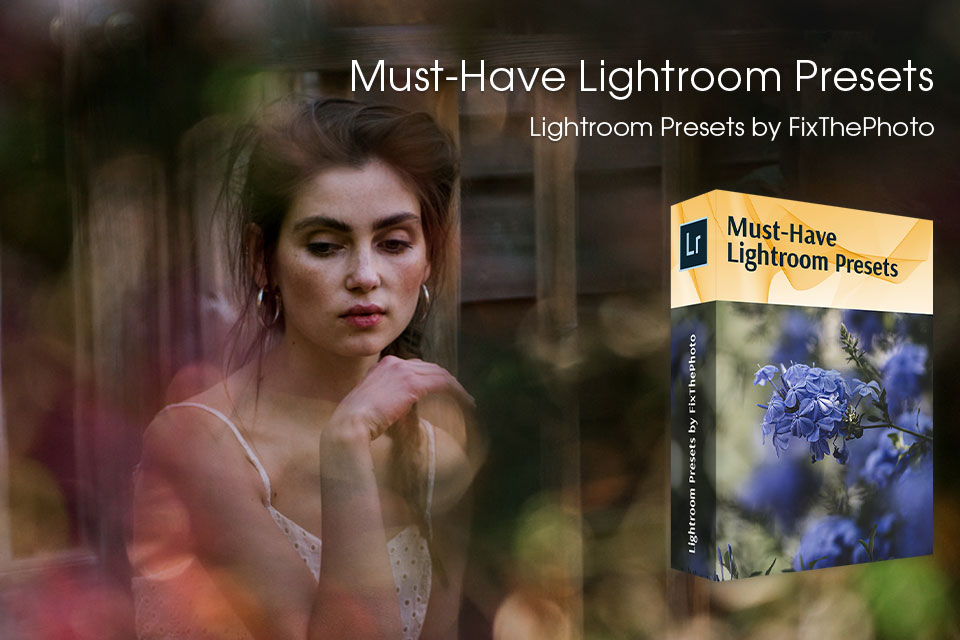
If you are unhappy with the colors or contrasts in your photos, you can easily fix everything with presets. These filters are easy-to-use so even beginners can apply them to boost tones, adjust saturation, light, and other settings. Enhance your RAW images by uploading a preset to Lightroom with just a few clicks.